Physical Address
304 North Cardinal St.
Dorchester Center, MA 02124
Physical Address
304 North Cardinal St.
Dorchester Center, MA 02124
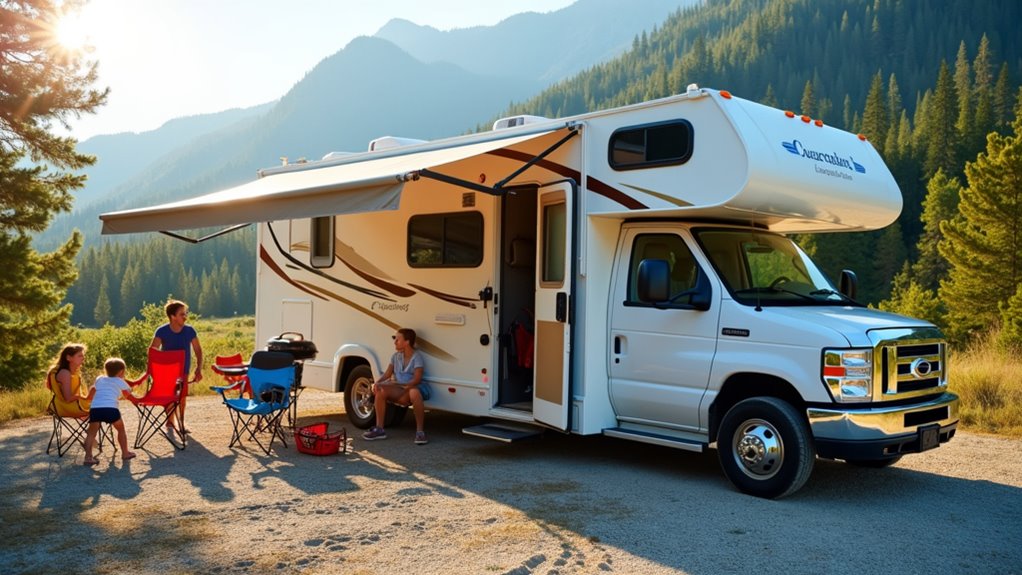
Navigate the essentials of RV rentals for your family vacation, from budget-friendly tips to must-know driving techniques that ensure smooth travels.
Just as you’re dreaming of a memorable family vacation, RV rentals have become more accessible than ever. You’ll find that an RV combines the comforts of home with the thrill of the open road, making it an attractive option for family travel. While the idea of hitting the highway in a home-on-wheels sounds straightforward, there’s quite a bit you’ll need to know before signing that rental agreement. Let’s explore what it takes to make your RV adventure both budget-friendly and stress-free.

Before hitting the road in your rented RV, careful route planning can save you significant time, money, and headaches. Start by using RV-specific trip planners like RV Trip Wizard or Roadtrippers to map your journey, focusing on RV-friendly roads and avoiding low clearances or weight restrictions.
Smart RV route planning isn’t just about the destination – it’s about finding the right roads that welcome your home-on-wheels.
Choose destinations and stops that match your family’s interests, but be strategic about urban vs. rural locations since RV parking in cities can be challenging. You’ll want to book campgrounds early, especially during peak seasons, and always have backup options ready. Expect to travel at 50 miles per hour on average when planning your daily distances.
Plan for reasonable daily driving distances and include rest days to prevent fatigue. Don’t forget to factor in fuel costs, campground fees, and potential emergencies. Taking a beginner RV course can help you better understand route planning and vehicle operation.
Map out service stations, repair shops, and rest areas along your route to guarantee a smooth, worry-free adventure.
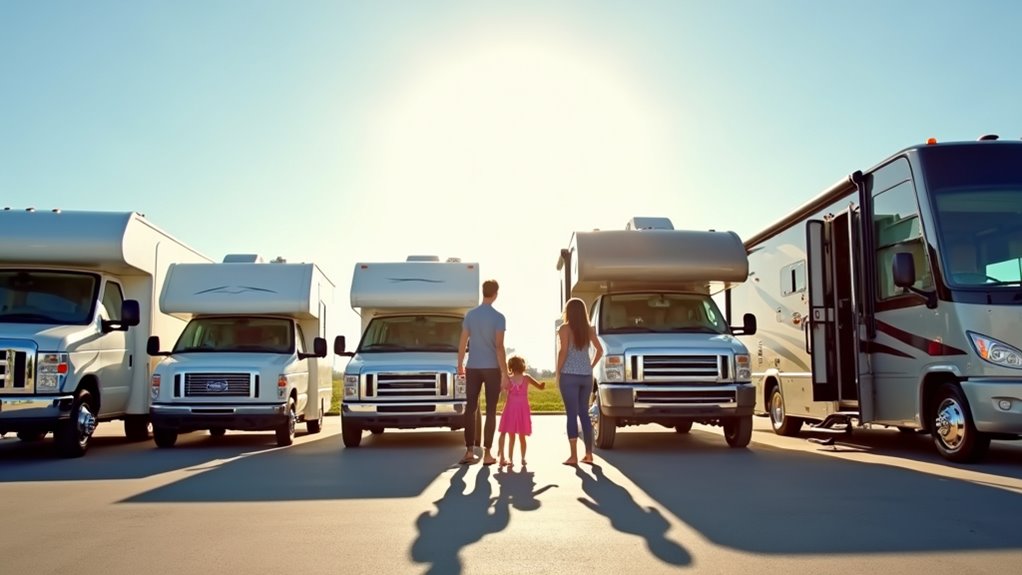
Three key factors determine the ideal RV size for your family: the number of travelers, your planned activities, and your comfort level with driving larger vehicles.
Small campers under 20 feet work well for couples or small families, while medium-sized RVs between 20-30 feet accommodate more people comfortably.
Consider your vehicle’s towing capacity and camping destinations before making your choice. Smaller RVs offer better fuel efficiency, easier maneuverability, and access to more campgrounds with size restrictions.
They’re also simpler to park and set up, making them ideal for short trips. Well-designed floor plans can help you make the most of interior space in compact models.
If you’re planning extended stays or traveling with a larger family, you’ll need an RV over 30 feet.
Just remember that bigger RVs require more maintenance and can be challenging for beginners to handle. Following a thorough rental checklist will help ensure you’re prepared for the specific demands of your chosen RV size.
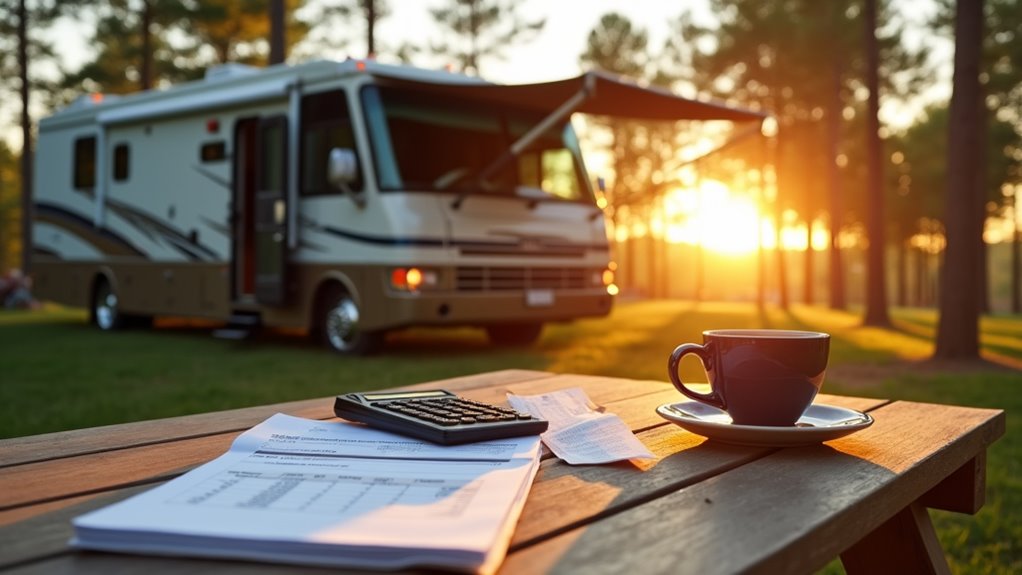
Understanding rental costs is essential when planning your RV adventure, as expenses can vary dramatically based on the type and age of vehicle you choose.
You’ll find newer Class A RVs at $350-450 per night, while older travel trailers can be as low as $50-125 nightly. Weekly rentals offer better value, with rates dropping considerably for longer stays. Many rental companies charge 38 cents per mile on average, which needs to be calculated into your total budget.
Don’t forget to factor in additional expenses like campground fees ($25-80 nightly), fuel costs (RVs get 6-10 MPG), and insurance ($10-50 daily). Monthly rental discounts can provide significant savings for extended trips.
To maximize your budget, consider booking during off-peak seasons when rates can be up to 40% lower. Compare prices between peer-to-peer platforms and national chains, as you might save 10-30%.
Early booking and midweek travel can also help reduce your overall costs considerably.
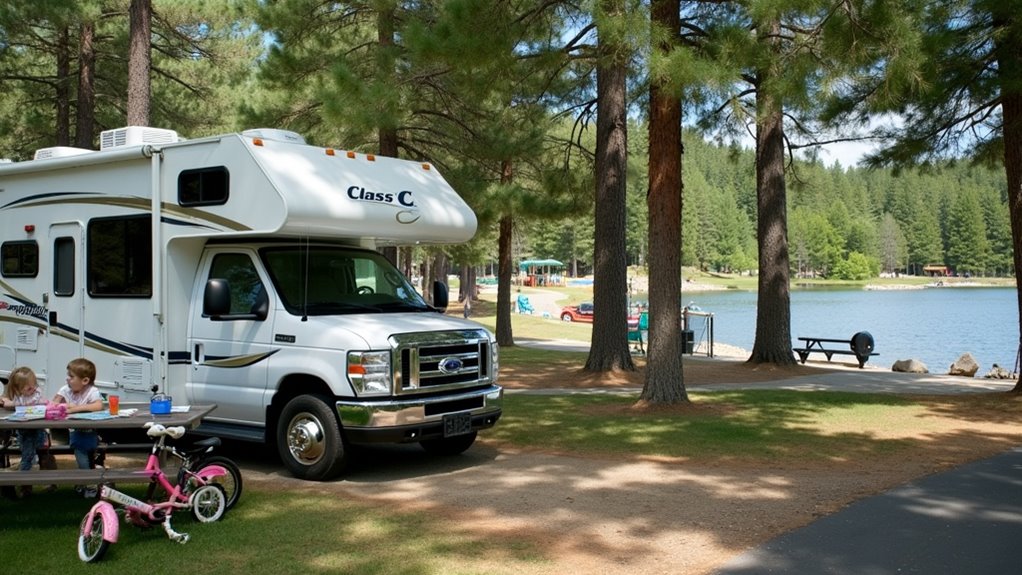
Now that you’ve budgeted for your RV rental, selecting the right campground can make or break your family vacation.
Look for campgrounds that match your family’s preferences and needs, keeping in mind that different regions offer varying experiences. Western and Northeastern families often prefer national and state parks, while Southern and Midwestern travelers tend to choose private campgrounds. With 11 million more households camping in 2024 compared to 2019, it’s essential to book your preferred campgrounds well in advance. Little adventurers thrive at family-focused campgrounds that prioritize safety and engaging activities.
Regional camping preferences vary widely across America, with public parks dominating the coasts while private campgrounds reign supreme in the heartland.
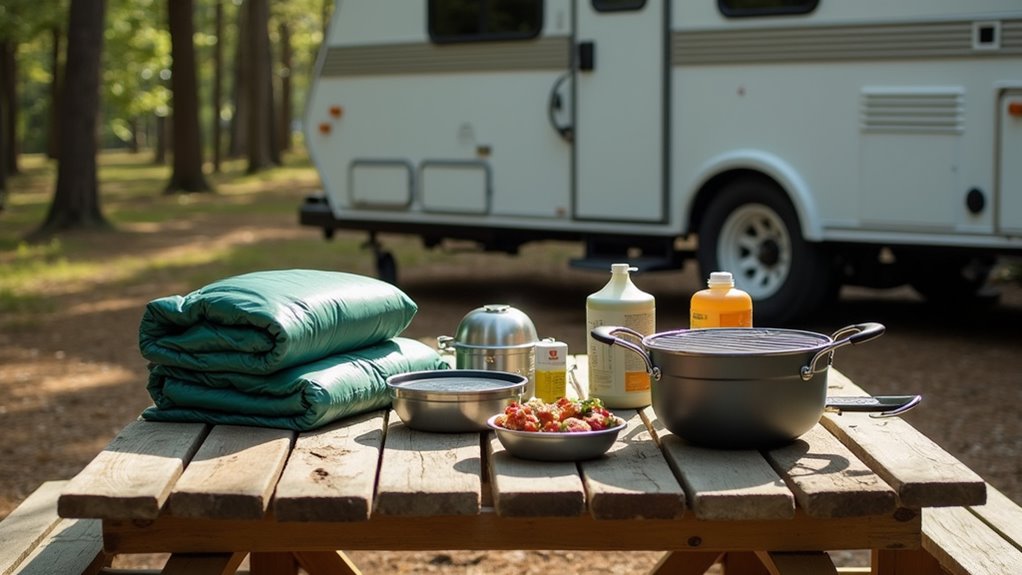
A successful RV adventure depends heavily on what you pack – and forgetting essential items can lead to costly purchases on the road.
Start with safety basics: a fire extinguisher, first aid kit, and emergency road kit should be your top priorities. Don’t forget electrical necessities like a surge protector and adapters to protect your RV’s systems. A backup generator can provide crucial power during unexpected outages or when hookups aren’t available.
For daily living, you’ll need toilet chemicals and a sewer kit for waste management, plus a water pressure regulator to prevent pipe damage. Consider bringing multiple waterproof bags to protect sensitive items during wet weather or water activities.
Pack smart for meals with basic kitchen tools like a cutting board, utensils, and can opener. Guarantee comfort with bedding, pillows, and towels – a mattress topper can make a big difference in sleep quality.
Include camping chairs and tables for outdoor relaxation, and bring entertainment options like board games for downtime.
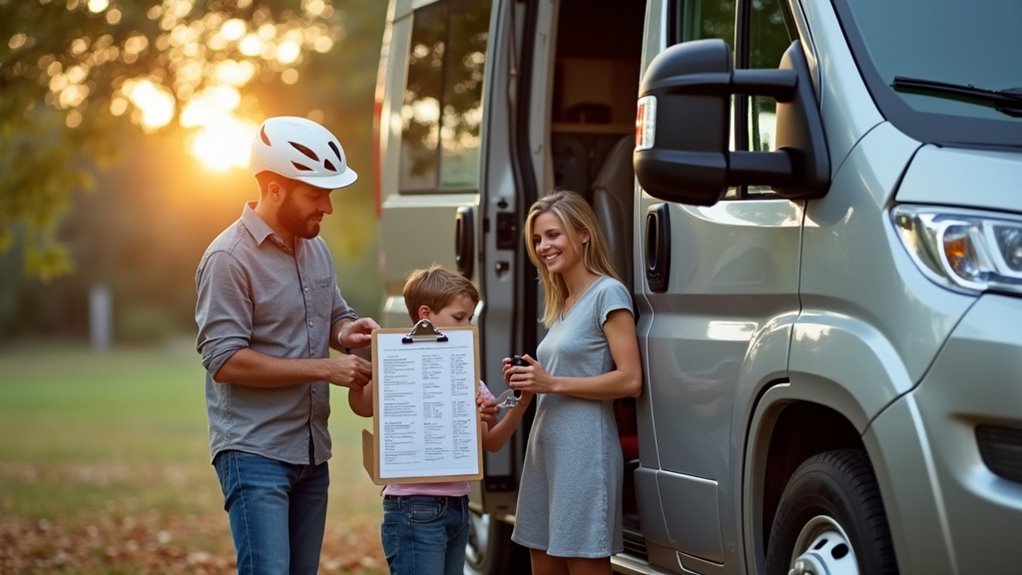
Safe RV travel begins with thorough preparation and understanding of your vehicle’s unique handling requirements. Before hitting the road, you’ll need to complete essential safety checks and familiarize yourself with proper driving techniques. Verify all passengers understand and follow safety protocols, including wearing seatbelts and securing loose items. Taking RV driving classes is highly recommended for inexperienced drivers to ensure safe handling of these large vehicles. When encountering strong gusts, using lower speeds helps maintain better control of your RV.
Don’t forget to turn off propane when driving, secure cabinet latches, and maintain proper following distance from other vehicles.
Regular check-ins with family members add an extra layer of safety during your journey.
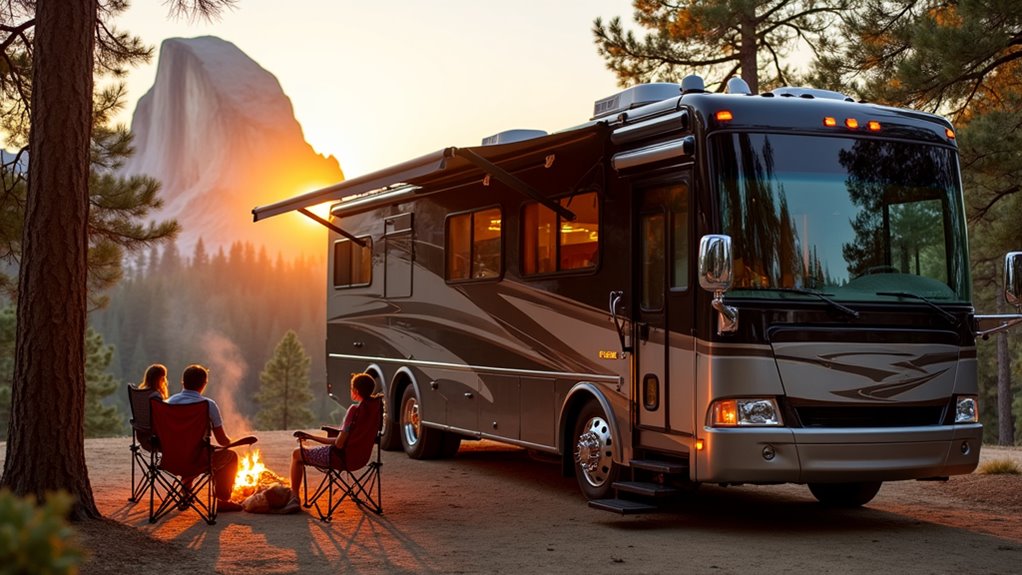
Popular RV destinations across America offer endless opportunities to create lasting family memories without breaking the bank.
You’ll find the most visited spots at Yosemite National Park, where family-friendly hikes showcase stunning scenery, and the Great Smoky Mountains, which offers abundant wildlife viewing opportunities.
For theme park enthusiasts, Orlando’s RV parks put you close to Disney World while saving on hotel costs.
Travelers typically prefer taking shorter trips within seven hours of their home base for convenient weekend getaways.
If you’re seeking outdoor adventure, head to Denver’s nearby Summit County for year-round activities from skiing to hiking.
Don’t miss the ranger-led programs at national parks – they’re free and kids love them.
Many RV parks also include family amenities like pools and playgrounds, plus organized activities that won’t strain your budget.
Oregon coast towns offer charming beachfront camping spots perfect for family-friendly RV adventures.
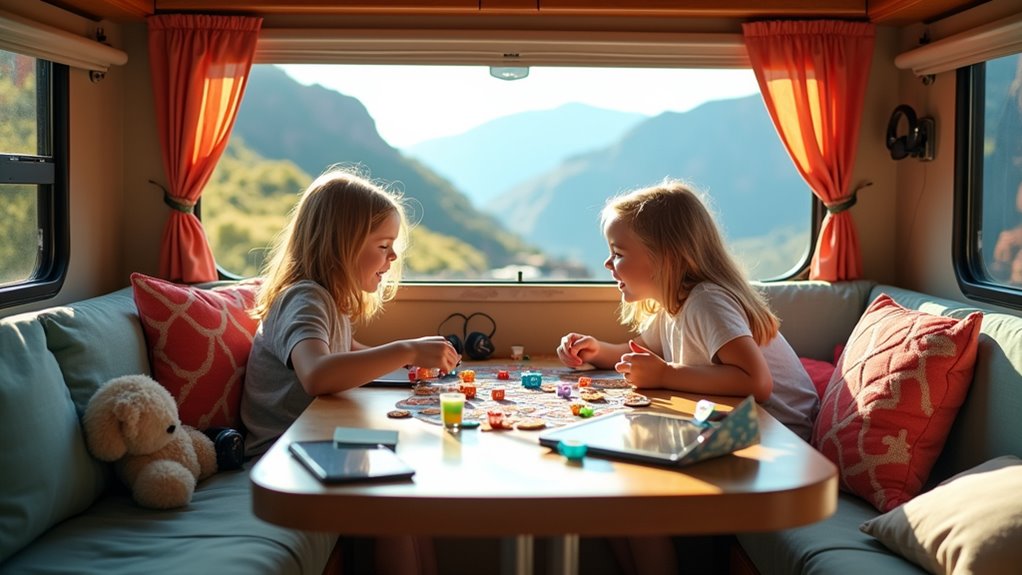
While exploring amazing destinations creates lasting memories, keeping kids engaged during the actual journey requires thoughtful planning. Mix educational activities with entertainment to maintain their interest and prevent boredom. Involve your children in trip planning and let them help choose destinations or activities – this builds excitement and gives them a sense of ownership in the adventure. Finding spots to splash in creeks and explore nature can provide refreshing breaks during long travel days. Child safety seats are essential when traveling in an RV with toddlers to ensure secure transport during the journey.
Remember to stay flexible with your schedule and maintain a comfortable, organized RV environment to keep stress levels low for everyone.
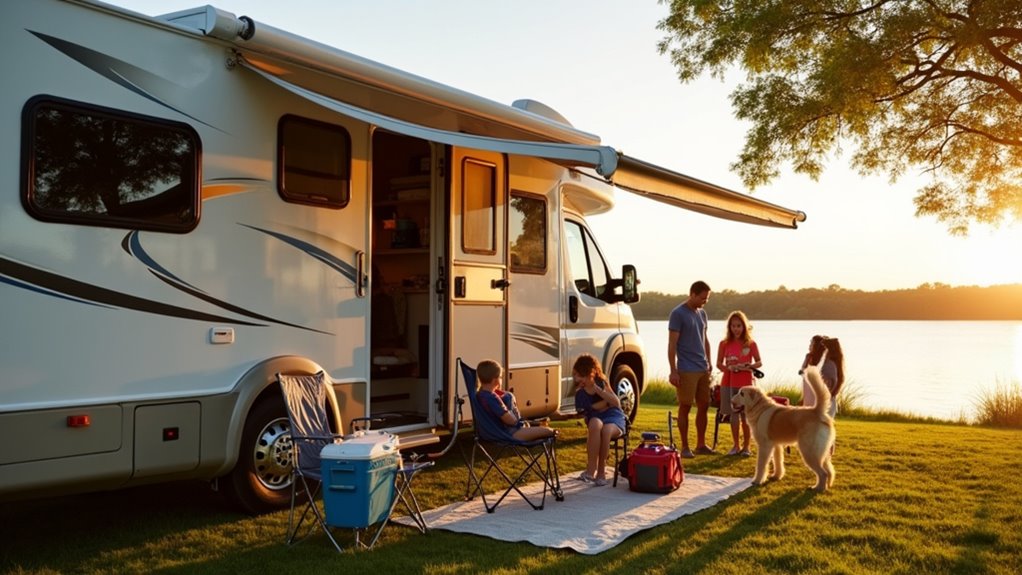
Five essential steps can make your first RV rental experience smoother and more enjoyable.
Start by choosing the right RV type for your needs – consider your family size, desired comfort level, and whether you’ll be moving frequently or staying put. Reading previous renter reviews can provide valuable insights into which RV models work best for different travel styles. Many renters find that Class C motorhomes offer an ideal balance of maneuverability and living space.
Selecting an RV that matches your group size and travel style is crucial for a successful rental experience.
Next, thoroughly review what’s included in your rental; don’t assume basics like kitchenware or linens come standard.
Don’t skip the walkthrough – it’s vital to record and understand every operational aspect of your RV before hitting the road.
You’ll also want to plan your route carefully, identifying RV-friendly roads and necessary maintenance stops in advance.
Finally, budget realistically by factoring in all costs: deposit, insurance, fuel, and potential fees for cleaning or extra mileage.
You’ll find that RV travel offers a unique blend of adventure and family bonding, with 65% of RV renters reporting significant savings compared to traditional vacations. By following these practical guidelines for vehicle selection, route planning, and budget management, you’re well-equipped for your family road trip. Remember to prioritize safety, book campgrounds early, and maintain flexibility in your schedule – it’s all part of the RV experience.